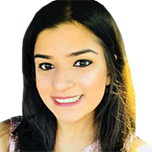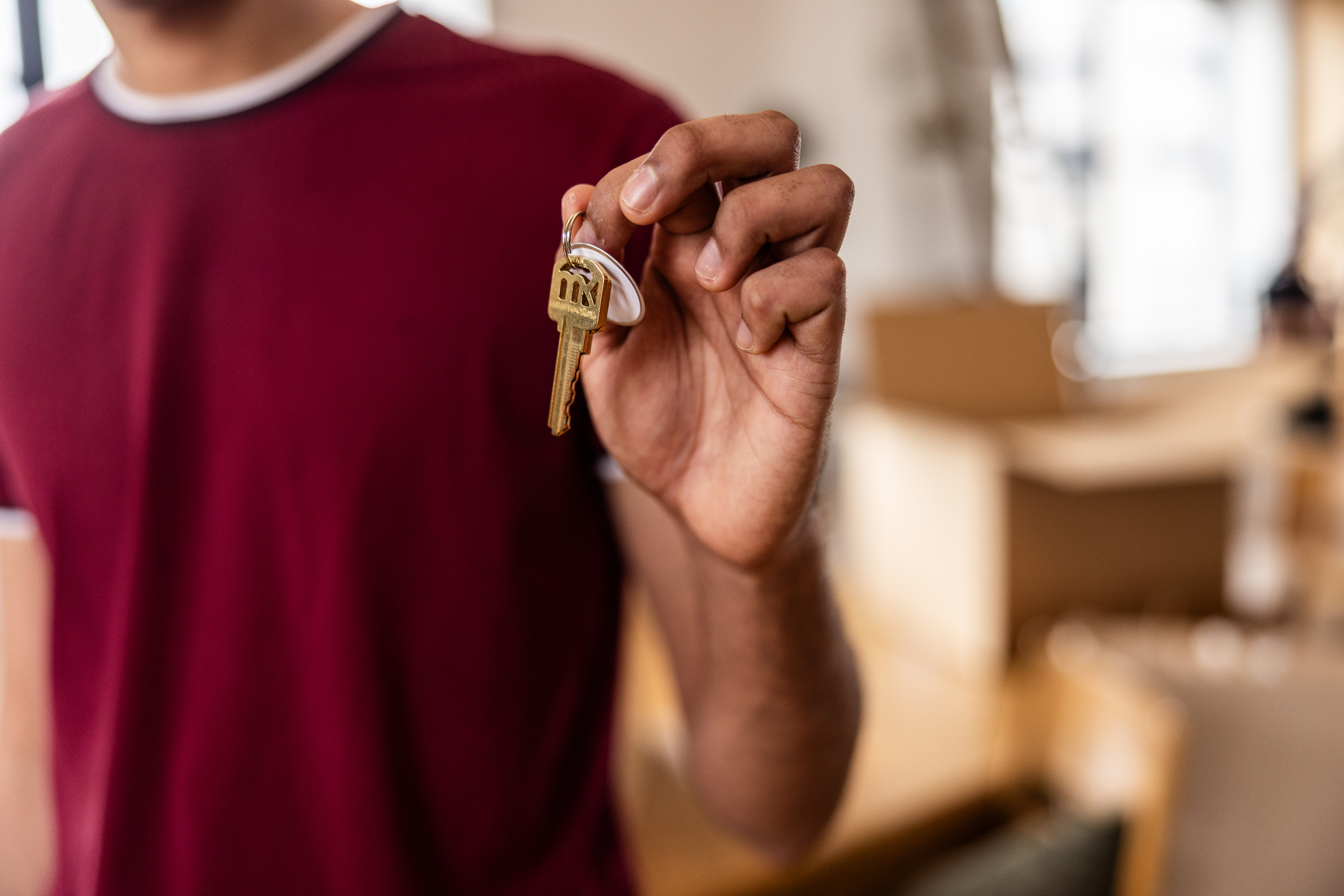Gold regains its shine after inflation risks resurface
Gold prices have been rising over the past month as fears of US inflation resurface. Saloni Sardana explains whether this could usher in a new bullish era for the precious metal.


The gold market has been loved and loathed in equal measure over the last year.
The precious metal has struggled to maintain the gains it made when it hit an all-time high of $2,063 last August, despite inflation expectations rising sharply. But on Friday, the gold price rose as the US ten-year Treasury bond yield fell after worse-than-expected employment data was released.
So what happened and does this usher in a new bullish era for gold?
MoneyWeek
Subscribe to MoneyWeek today and get your first six magazine issues absolutely FREE

Sign up to Money Morning
Don't miss the latest investment and personal finances news, market analysis, plus money-saving tips with our free twice-daily newsletter
Don't miss the latest investment and personal finances news, market analysis, plus money-saving tips with our free twice-daily newsletter
Gold’s turbulent last year
Rising geopolitical tensions and loose monetary policies, among other factors, had helped bullion cross the $2,000 mark the first time last summer.
But it suffered in recent months due to “a strong US dollar (seen as a safe haven too) but more pertinently a rally in the ten-year US Treasury yield. Both of these factors are finally going into reverse and gold is currently seeing an uptick”, Ross Norman, chief executive of Metals Daily, tells MoneyWeek.
The gold price was also hit by a sell-off in the US bond market in March, driving the price of bonds down and yields up. As gold does not offer any real rate of return, higher bond yields make holding bullion less attractive as investors would rather hold bonds than gold.
Now the price of gold is down by more than 3% since the start of the year, in sharp contrast to the rises seen in many other asset classes. Bitcoin, for example, has exploded and US stockmarkets have traded at record highs in the same time.
Why the “non-farm payrolls” report matters for gold
America’s monthly non-farm payrolls report has always been closely monitored by market watchers. It gives an insight into the number of jobs created in the world’s largest economy, which has ramifications for markets everywhere.
On Friday, the report showed that just 266,000 jobs had been created in April, far short of the almost million jobs that economists were predicting. The gold price rose and enjoyed its best week since December, posting a 3% weekly gain. As John noted yesterday, Friday’s woeful jobs data increases the threat of inflation, which could benefit gold.
The second reason the gold market looks promising is a lower likelihood of “tapering” by the Federal Reserve – where the Fed gradually reduces its quantitative easing policies and slowly begins to increase interest rates. The gold price lost almost 20% between March and September 2013 during the “taper tantrum” – the period where the Fed abruptly withdrew support, points out Giles Coghlan, chief currency analyst at broker HYCM.
Last week, Janet Yellen, the US Treasury secretary and former chair of the Federal Reserve, stunned markets last week when she said the Fed may have to start increasing rates to stop the economy overheating. Her remarks raised expectations of an earlier tapering (despite the Fed’s monetary policy decisions being set independently of the Treasury), which may have weighed on gold. But her comments contradicted those made by the current Fed chief Jay Powell, and those of her own administration.
And with the Federal Reserve now charged with ensuring high employment, rather than keeping tabs on inflation, the disappointing jobs report makes tapering less likely, with gold likely to benefit from continued loose monetary policies.
Gold will provide a hedge to commodities-linked inflation
While some markets may interpret the non-farm payrolls figure as less inflationary, I’m not sure I agree. The risks of inflation are as high as ever, even though the Fed is now less likely to tighten monetary policy
So what does this mean? It means inflationary pressures are an even higher possibility now, something which will boost gold.
Higher inflation expectations are reflected through a rising ten-year breakeven rate, which shows the difference between ten-year nominal yields and the ten-year Treasury yield adjusted for inflation.
“This [NFP] report can still be seen as inflationary. This was perhaps illustrated by the fact that ten-year breakevens rose above 2.50% on Friday (+5bps on the day) and to their highest levels since April 2013,” says Jim Reid, a research strategist at Deutsche Bank.
Another boost to gold prices comes as commodities from copper and iron ore to lumber and corn are swelling in value most of them are at record highs, due to a supply squeeze amid a reopening of the economy. Why should investors care about this?
Simply put, this has fuelled speculation as to whether the next “commodities supercycle” is underway. If so, investors could flock to gold to protect themselves from the costs of higher raw materials.
“The combination of high raw materials, higher velocity of money as economies free up and a tighter jobs market however could spell quite an inflationary “event”,” says Norman.
Why else may gold rise?
Demand for gold from India is likely to stay strong, despite the country facing a violent covid outbreak.
Norman doesn’t think the second wave will prompt Indians buyers to buy less gold – which normally features in their celebrations and weddings – ahead of the wedding season in August.
“The rationale for owning gold for Indians will be greater than ever in these challenged times. Gold is nearing the all important 50,000 rupee/10 gram level and this is likely to provide some psychological resistance,” he says.
Of course, there is always the chance that rising commodity prices force the Fed to raise interest rates a bit sooner and take markets by surprise, but as Juan Carlos Artigas, head of research at the World Gold Council, points out, real interest rates, which are adjusted for inflation, aren’t a reason to worry yet.
“Our research indicates that, historically, only when real rates reach levels above 4% that gold has seen more generally bearish sentiment. We are still far away from that level,” he says.
So love it, hate it, deny it, or accept it. Gold will be a key inflation hedge in the next coming months.
Get the latest financial news, insights and expert analysis from our award-winning MoneyWeek team, to help you understand what really matters when it comes to your finances.
Saloni is a web writer for MoneyWeek focusing on personal finance and global financial markets. Her work has appeared in FTAdviser (part of the Financial Times), Business Insider and City A.M, among other publications. She holds a masters in international journalism from City, University of London.
Follow her on Twitter at @sardana_saloni
-
 RICS: Budget failed to boost property market and recovery unlikely until spring 2026
RICS: Budget failed to boost property market and recovery unlikely until spring 2026Data from the Royal Institution of Chartered Surveyors suggests the Autumn Budget hasn't helped to improve property market sentiment
-
 FCA launching targeted support to help savers with complex financial decisions
FCA launching targeted support to help savers with complex financial decisionsThe regulator wants to help you get to grips with investing and pension planning. Here’s how its new targeted support framework will help you
-
 The challenge with currency hedging
The challenge with currency hedgingA weaker dollar will make currency hedges more appealing, but volatile rates may complicate the results
-
 What's behind the big shift in Japanese government bonds?
What's behind the big shift in Japanese government bonds?Rising long-term Japanese government bond yields point to growing nervousness about the future – and not just inflation
-
 Can Donald Trump fire Jay Powell – and what do his threats mean for investors?
Can Donald Trump fire Jay Powell – and what do his threats mean for investors?Donald Trump has been vocal in his criticism of Jerome "Jay" Powell, chairman of the Federal Reserve. What do his threats to fire him mean for markets and investors?
-
 Freetrade’s new easy-access funds aim to beat top savings rates
Freetrade’s new easy-access funds aim to beat top savings ratesFreetrade has launched an easy-access exchange traded fund (ETF) range - here’s how the ETFs work and how they compare to the savings market
-
 Go for value stocks to insure your portfolio against shocks, says James Montier
Go for value stocks to insure your portfolio against shocks, says James MontierInterview James Montier, at investment management group GMO, discusses value stocks and slow-burn Minsky moments with MoneyWeek.
-
 Halifax: House price slump continues as prices slide for the sixth consecutive month
Halifax: House price slump continues as prices slide for the sixth consecutive monthUK house prices fell again in September as buyers returned, but the slowdown was not as fast as anticipated, latest Halifax data shows. Where are house prices falling the most?
-
 Rents hit a record high - but is the opportunity for buy-to-let investors still strong?
Rents hit a record high - but is the opportunity for buy-to-let investors still strong?UK rent prices have hit a record high with the average hitting over £1,200 a month says Rightmove. Are there still opportunities in buy-to-let?
-
 Pension savers turn to gold investments
Pension savers turn to gold investmentsInvestors are racing to buy gold to protect their pensions from a stock market correction and high inflation, experts say
